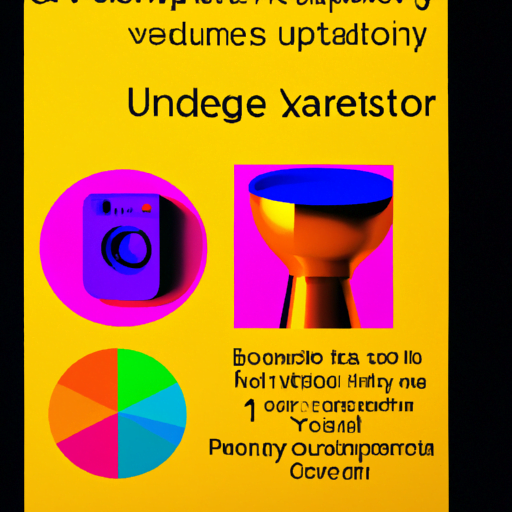
-
Table of Contents
- Understanding User Experience (UX) Design
- The Basics of User Experience (UX) Design
- The Importance of User Experience (UX) Design
- Key Elements of User Experience (UX) Design
- User Research
- Information Architecture
- Interaction Design
- Visual Design
- Usability Testing
- Successful Examples of User Experience (UX) Design
- Apple
- Netflix
- Measuring the Impact of User Experience (UX) Design
- User Satisfaction Surveys
- Task Success Rate
- Conversion Rates
- Time on Task
- Conclusion
Understanding User Experience (UX) Design

User Experience (UX) design is a crucial aspect of creating successful digital products and services. It focuses on enhancing user satisfaction by improving the usability, accessibility, and overall experience of a product. In today’s competitive digital landscape, businesses that prioritize UX design gain a significant advantage over their competitors. This article will explore the fundamentals of UX design, its importance, and how it can be effectively implemented to create exceptional user experiences.
The Basics of User Experience (UX) Design
UX design encompasses a range of disciplines, including interaction design, information architecture, visual design, and usability. It involves understanding the needs and goals of users and designing products that meet those requirements effectively. The goal of UX design is to create a seamless and enjoyable experience for users, ensuring they can easily navigate and interact with a product or service.
One of the key principles of UX design is empathy. Designers must put themselves in the shoes of the users and understand their motivations, behaviors, and pain points. By empathizing with users, designers can create intuitive and user-friendly interfaces that address their needs and provide a delightful experience.
The Importance of User Experience (UX) Design
Investing in UX design offers numerous benefits for businesses, including:
- Increased User Satisfaction: A well-designed user experience leads to higher user satisfaction, which in turn increases customer loyalty and retention.
- Improved Usability: UX design focuses on making products easy to use, reducing the learning curve and minimizing user errors.
- Enhanced Brand Perception: A positive user experience creates a favorable impression of the brand, leading to increased trust and credibility.
- Higher Conversion Rates: When users have a positive experience, they are more likely to convert into customers or take desired actions, such as making a purchase or signing up for a service.
- Reduced Support Costs: A well-designed user experience reduces the need for customer support, as users can easily navigate and understand the product on their own.
These benefits highlight the significant impact that UX design can have on a business’s success. By prioritizing user experience, companies can differentiate themselves from competitors and build long-term relationships with their customers.
Key Elements of User Experience (UX) Design
Effective UX design involves several key elements that work together to create a seamless user experience. These elements include:
User Research
User research is a critical phase in the UX design process. It involves gathering insights about the target audience, their needs, and their behaviors. By conducting user research, designers can make informed decisions and create user-centered designs that meet the specific requirements of the target users.
Information Architecture
Information architecture focuses on organizing and structuring information in a way that is intuitive and easy to navigate. It involves creating clear hierarchies, labeling systems, and navigation menus that help users find the information they need quickly and effortlessly.
Interaction Design
Interaction design focuses on designing the interactions between users and a product. It involves creating intuitive and responsive interfaces that allow users to interact with the product seamlessly. Interaction design considers factors such as user flows, microinteractions, and feedback mechanisms to ensure a smooth and engaging user experience.
Visual Design
Visual design is concerned with the aesthetics and visual appeal of a product. It involves creating visually pleasing interfaces that align with the brand’s identity and evoke positive emotions in users. Visual design encompasses elements such as color schemes, typography, iconography, and overall layout.
Usability Testing
Usability testing involves evaluating a product’s usability by observing users as they interact with it. This process helps identify any usability issues or pain points that users may encounter. By conducting usability testing, designers can gather valuable feedback and make iterative improvements to enhance the overall user experience.
Successful Examples of User Experience (UX) Design
Several companies have excelled in UX design, setting the benchmark for exceptional user experiences. Let’s explore a few successful examples:
Apple
Apple is renowned for its user-centric design approach. From its intuitive operating systems to its sleek hardware, Apple products prioritize simplicity and ease of use. The company’s attention to detail and focus on delivering delightful experiences have contributed to its loyal customer base.
Google’s search engine is a prime example of effective UX design. With its minimalist interface and lightning-fast search results, Google provides users with a seamless and efficient search experience. The company’s commitment to continuously improving its user experience has made it the go-to search engine for billions of users worldwide.
Netflix
Netflix has revolutionized the way we consume entertainment. Its user-friendly interface, personalized recommendations, and seamless streaming experience have made it a dominant player in the streaming industry. By understanding user preferences and delivering a tailored experience, Netflix keeps users engaged and satisfied.
Measuring the Impact of User Experience (UX) Design
Quantifying the impact of UX design is essential to justify investments and drive continuous improvement. Here are some key metrics and methods for measuring the impact of UX design:
User Satisfaction Surveys
Conducting user satisfaction surveys allows businesses to gather feedback directly from users. By asking targeted questions about the user experience, companies can identify areas for improvement and track changes in user satisfaction over time.
Task Success Rate
Task success rate measures the percentage of users who successfully complete a specific task or goal within a product. By tracking task success rates, businesses can identify usability issues and make iterative improvements to enhance the user experience.
Conversion Rates
Conversion rates measure the percentage of users who take a desired action, such as making a purchase or signing up for a service. By analyzing conversion rates, businesses can assess the impact of UX design on driving user actions and optimize their conversion funnels accordingly.
Time on Task
Time on task measures the average time it takes for users to complete a specific task or goal within a product. By analyzing time on task, businesses can identify areas of friction and streamline the user experience to reduce task completion times.
Conclusion
User Experience (UX) design plays a pivotal role in creating exceptional digital experiences. By understanding user needs, conducting thorough research, and implementing effective design principles, businesses can create products and services that delight users and drive business success. Prioritizing UX design leads to increased user satisfaction, improved usability, enhanced brand perception, higher conversion rates, and reduced support costs. By investing in UX design and continuously measuring its impact, businesses can gain a competitive edge
